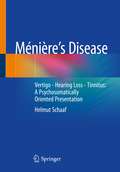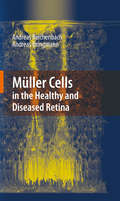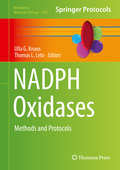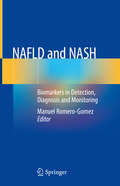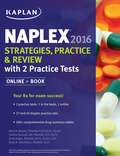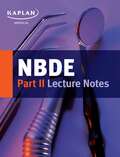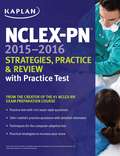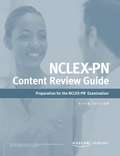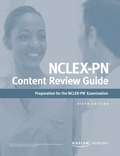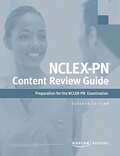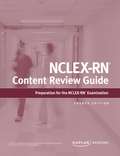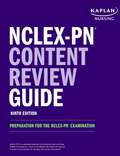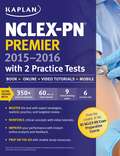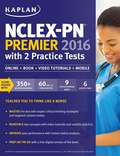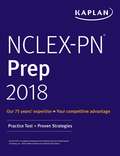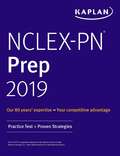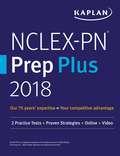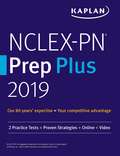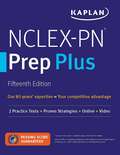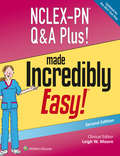- Table View
- List View
Más vegetales, menos animales: Una alimentación más saludable y sostenible
by Julio Basulto Juanjo CáceresMás vegetales, menos animales aborda el tema de la alimentación vegetal, desmontando falsas creencias y proporcionando argumentos científicos que la avalan. La adopción de pautas alimentarias que dejan total o parcialmente de lado los productos de origen animal es considerada por la población, en ocasiones, una mera opción ideológica, carente de fundamento científico y hasta perniciosa para la salud. De entre dichas pautas, conocidas como «dietas basadas en plantas» (plant-based diets), destacan el vegetarianismo y el veganismo. Frente a ello, Julio Basulto y Juanjo Cáceres muestran por qué, de acuerdo con el conocimiento científico disponible, el patrón dietético que se relaciona con una mejor calidad de vida y, también, con una mayor esperanza de vida puede sintetizarse en la siguiente máxima: «Más vegetales, menos animales y nada o casi nada de carnes procesadas y alimentos superfluos». Los autores revisan también en esta obra aspectos históricos de la alimentación y de la hominización, desmintiendo que la alimentación basada en vegetales sea una moda reciente, así como las cuestiones ambientales, éticas e incluso económicas que avalan también optar por esta pauta dietética.
Männergesundheit: Was Männer wissen sollten, um gesund zu bleiben
by Tobias JägerMänner haben eine im Vergleich zu Frauen etwa 5 Jahre geringere Lebenserwartung. Das muss nicht sein, wenn sich jeder Mann um seine Gesundheit kümmert und Vorsorge und Fürsorge für seinen Körper übernimmt. Das Buch gibt einen verständlichen und wissenschaftlich fundierten Überblick über die Gesundheitsvorsorge und typische Erkrankungen des Mannes während seiner 2. Lebenshälfte. Sowohl die klassisch urologischen Themen, insbesondere Erkrankungen der Prostata, Hoden und Harnblase wie auch Fragen zur Fertilität, zu Erektionsproblemen und zum Hormonhaushalt werden besprochen. Aber auch die Themen Bewegung, mentales Wohlbefinden und Ernährung werden thematisiert. Informativ und verständlich gibt das Sachbuch viele Antworten auf wichtige Fragen der Männergesundheit und konkrete Tipps für Vorsorge- und Präventionsmaßnahmen. Gesundheitsbewusstsein und Vorsorge für ein langes Männerleben!
Männerschnupfen: Warum Männer immer mehr leiden als Frauen, wenn sie krank sind
by Peter Buchenau Ina Lackerbauer Urs Peter Janetz Marina TinzIn diesem Buch finden Sie alle Antworten darauf, warum bei Männern eine Erkältung nicht einfach nur eine Erkältung ist und sie stets denken, todsterbenskrank zu sein, auch wenn es ein einfacher Schnupfen ist. Haben Sie sich schon einmal gefragt, warum das so ist? Wir erklären es Ihnen: wie sich das Verhalten von Männern und Frauen generell unterscheidet, ob die Rollenbilder einen Einfluss auf das Phänomen des Männerschnupfens haben, warum Erkältungen von Männern und Frauen unterschiedlich wahrgenommen werden, warum Männer extrem und irrational besorgt sind, wenn sie krank werden, wie Frauen Schmerzen wahrnehmen. Augenzwinkernd und charmant formuliert - eine Ode an die neue Männlichkeit: der Schrei nach Aufmerksamkeit. Leidensszenario, Hausmittel und Therapievorschläge inklusive. Als besonderes Extra enthält die 2. Auflage Ausschnitte aus dem Männerschnupfen-Bühnenprogramm sowie ein Koch-Video.
Männerthemen und psychische Gesundheit von Männern: Eine Einführung
by Rob WhitleyTraditionell wurden die psychischen Probleme von Männern auf männlichen Starrsinn und starre Vorstellungen von Männlichkeit zurückgeführt. Es setzt sich jedoch zunehmend die Erkenntnis durch, dass die psychische Gesundheit von Männern durch eine Reihe von Faktoren wie familiäre, erzieherische, berufliche und rechtliche Probleme sozial bedingt ist. Diese und eine Vielzahl anderer sozialer Probleme wurden unter dem Begriff "Männerprobleme" zusammengefasst und werden zunehmend mit negativen Auswirkungen auf die psychische Gesundheit von Männern in Verbindung gebracht. Dieses Buch gibt einen Überblick über die psychische Gesundheit von Männern und damit zusammenhängende Männerthemen, wobei ein von der öffentlichen Gesundheit inspirierter Ansatz verfolgt wird, der die Forschung über den Zusammenhang zwischen sozialen Belastungen und psychischen Gesundheitsergebnissen untersucht. Das Buch ist insofern einzigartig, als es durch die Auswertung der sozialwissenschaftlichen und psychiatrischen Literatur Männerprobleme, die psychische Gesundheit von Männern und soziale Determinanten in einer ganzheitlichen und integrierten Weise zusammenfasst und untersucht.In diesem Buch erörtert der Autor die sozialen Determinanten der psychischen Gesundheit von Männern sowie begleitende psychosoziale Interventionen und geht dabei über eindimensionale Diskussionen über Männlichkeit hinaus. Zu den behandelten Themen gehören:Die sozialen Determinanten des männlichen SuizidsAufmerksamkeitsdefizit-/Hyperaktivitätsstörung bei jungen Männern: Die Medikalisierung der Jungenschaft?Warum nehmen Männer nur selten formelle psychiatrische Dienste in Anspruch? Eine Analyse sozialer und systemischer Hindernisse für die Versorgung und Diskussion vielversprechender männerfreundlicher PraktikenDas Geschlechtergefälle in der Bildung: Zum Verständnis der mangelnden schulischen Leistungen junger Männer und ihres Zusammenhangs mit negativer psychischer GesundheitBeschäftigung, Arbeitslosigkeit und Fragen des Arbeitsplatzes im Zusammenhang mit der psychischen Gesundheit von MännernMen's Issues and Men's Mental Health: An Introductory Primer ist eine unverzichtbare Lektüre für Angehörige der Gesundheitsberufe und Anbieter sozialer Dienste wie Psychiater, Psychologen, Sozialarbeiter, Ergotherapeuten, Berater, Lehrer, Mitarbeiter von Wohlfahrtsverbänden, Fachleute für Gesundheitsförderung und Beamte des öffentlichen Gesundheitswesens. Es ist auch ein nützlicher Text für Studenten im Grundstudium und im Hauptstudium in den Bereichen Gesundheitswesen, soziale Dienste, öffentliche Gesundheit, Epidemiologie und Sozialwissenschaften, insbesondere Soziologie, Psychologie und Geschlechterstudien. Schließlich kann das Buch auch von einem intelligenten Laien gelesen und verstanden werden, so dass es für die breite Öffentlichkeit zugänglich ist.
Ménière’s Disease: Vertigo - Hearing Loss - Tinnitus: A Psychosomatically Oriented Presentation
by Helmut SchaafIn dem Band erläutert der Autor die typischen Anzeichen des Morbus Menière, er legt dar, was man über die Krankheit wissen sollte und welche Behandlungskonzepte es gibt. Alle Aspekte der Erkrankung – Grundlagen, Auswirkungen und Therapiemöglichkeiten – sind leicht verständlich zusammengefasst, so dass Betroffene und behandelnder Arzt gleichermaßen davon profitieren. Die neu bearbeitete 7. Auflage informiert über aktuelle medizinische Möglichkeiten und Grenzen und weist auf verfeinerte psychosomatische Vorgehensweisen im Umgang mit der Krankheit hin.
Müller Cells in the Healthy and Diseased Retina
by Andreas Reichenbach Andreas BringmannMüller cells may be used in the future for novel therapeutic strategies to protect neurons against apoptosis (for example, somatic gene therapy), or to differentiate retinal neurons from Müller/stem cells. Meanwhile, a proper understanding of the gliotic responses of Müller cells in the diseased retina, and of their protective vs. detrimental effects, is essential for the development of efficient therapeutic strategies that use and stimulate the neuron-supportive/-protective - and prevent the destructive - mechanisms of gliosis.
NADPH Oxidases: Methods and Protocols (Methods in Molecular Biology #1982)
by Ulla G. Knaus Thomas L. LetoThis detailed volume explores the NADPH oxidase family of enzymes in human physiology and genetic disease, in which early discoveries represent prime examples of the finest translational “from bed to bench and back” studies. Methods are included for testing assembly and function of multicomponent oxidase complexes and for analyzing reactive oxygen species (ROS) generation in different systems by various means, while addressing pitfalls of ROS probes currently being used, as well as protocols on NADPH oxidase regulation and their function in cells. Written in the highly successful Methods in Molecular Biology series format, chapters include introduction to their respective topics, lists of the necessary materials and reagents, step-by-step, readily reproducible laboratory protocols, and tips on troubleshooting and avoiding known pitfalls. Authoritative and cutting-edge, NADPH Oxidases: Methods and Protocols will aid researchers working with the NOX/DUOX family in continuing and expanding upon their vital research.
NAFLD and NASH: Biomarkers in Detection, Diagnosis and Monitoring
by Manuel Romero-GomezThis book provides a comprehensive overview of the diagnosis and management of Non-alcoholic Fatty Liver Disease (NAFLD) and Non-Alcoholic Steatohepatis (NASH). Basic principles of disease progression, the genetic and nutritional basis of NAFLD and NASH are explained along with the proteomic principles underlying biomarker development. Chapters cover both biochemical and imaging biomarkers used in elastrography and ultrasound and discuss how these are applicable to early diagnosis and monitoring of NASH and NAFLD. This is a useful resource for hepatologists, primary care providers with an interest in metabolic disease, diabetologists and endocrinologists in their daily clinical practice.
NAPLEX 2016 Strategies, Practice, and Review with 2 Practice Tests: Online + Book
by Amie Brooks Brian R. Overholser Cynthia Sanoski Emily R. HajjarKaplan's NAPLEX 2016 Strategies, Practice, and Review with 2 Practice Tests is a step-by-step guide to scoring higher on the North American Pharmacist Licensure Examination.Features:* NEW! Chapters on renal disorders, hepatic disorders, transplant immunosuppression, and preventive medicine* NEW! 50 percent more end-of-chapter review questions to assess your content knowledge* 200+ comprehensive tables summarizing must-know drugs at a glance, including the 200 most-prescribed drugs* 2 full-length practice tests* Online practice test that simulates the exam experience and actively tracks your areas of strength and weakness* Robust calculations section, with 30+ practice problems and step-by-step math solutions* Organized, streamlined coverage of each NAPLEX subject area* Suggested study times for each NAPLEX topic to help calibrate your study plan
NBDE Part II Lecture Notes
by Kaplan MedicalKaplan is proud to release this completely up-to-date, full-color edition of NBDE Part II Lecture Notes. Content is presented in a bulleted, outline format for easier reading and review. Each chapter includes learning objectives to focus your study, board-style Q&A to test your knowledge, and boxed key concepts for easier highlighting. As the board exam becomes increasingly difficult and pass rates decline, more comprehensive, targeted review is needed for a stellar score. NBDE Part II thoroughly covers all major exam disciplines to effectively strengthen your skills, and target and improve areas of weakness. The subjects covered include: * Endodontics * Operative Dentistry * Oral Diagnosis * Pedodontics * Periodontics * Pharmacology * Prosthodontics * ...and more!
NCLEX-PN 2015-2016 Strategies, Practice, and Review with Practice Test
by KaplanKaplan's NCLEX-PN 2015-2016 Strategies, Practice, and Review offers you the most effective methods available to guarantee a passing score. This guide features:* Full practice test with detailed answer explanations* Practice sets at the end of each chapter* In-depth review of all question types, including alternate-format questions* Information on the exam's content and structure* Exclusive strategies for exam success, including computer adaptive test techniquesWith the most test-like questions anywhere, NCLEX-PN 2015-2016 Strategies, Practice, and Review will make you assured and confident on test day.
NCLEX-PN Content Review Guide
by Kaplan NursingGet comprehensive review of essential nursing content with Kaplan's NCLEX-PN Content Review guide. Up-to-date. Updated annually by Kaplan’s expert nursing faculty. Complete. Covers must-know nursing content required to pass the NCLEX-PN. Expert Strategies. Master critical reasoning with Kaplan's acclaimed Decision Tree. Learner-efficient. Organized in outline format with information presented in easy-access tables. Trusted. Used by thousands of students each year to succeed on the NCLEX-PN the first time. Chapters follow the NCLEX's Client Needs Categories so you know you have complete content coverage. Kaplan regularly reviews and revises content to ensure that we are providing the most up-to-date prep, realistic practice materials, and the most current test information.
NCLEX-PN Content Review Guide (Kaplan Test Prep Ser.)
by Kaplan NursingA Simon & Schuster eBook. Simon & Schuster has a great book for every reader.
NCLEX-PN Content Review Guide: Preparation For The Nclex-pn Examination (Kaplan Test Prep)
by Kaplan NursingKaplan’s NCLEX-PN Content Review Guide provides comprehensive review of the essential content you need to ace the NCLEX-PN exam.The Best ReviewCovers all the must-know content required to pass the NCLEX-PNContent is organized in outline format and easy-access tables for efficient reviewChapters follow the NCLEX’s Client Need Categories so you know you have complete content coverageKaplan’s acclaimed Decision Tree and expert strategies help you master critical reasoningUsed by thousands of students each year to succeed on the NCLEX-RNExpert GuidanceKaplan’s expert nursing faculty reviews and updates content annuallyWe invented test prep—Kaplan (www.kaptest.com) has been helping students for 80 years, and our proven strategies have helped legions of students achieve their dreams
NCLEX-PN Content Review Guide: Preparation for the NCLEX-PN Examination
by KaplanGet comprehensive review of essential nursing content with Kaplan's NCLEX-PN Content Review Guide. Up-to-date. Updated annually by Kaplan's expert nursing faculty.Complete. Covers must-know nursing content required to pass the NCLEX-PN.Expert Strategies. Master critical reasoning with Kaplan's acclaimed Decision Tree.Learner-efficient. Organized in outline format with information presented in easy-access tables.Trusted. Used by thousands of students each year to succeed on the NCLEX-PN the first time. Chapters follow the NCLEX's Client Needs Categories so you know you have complete content coverage.
NCLEX-PN Content Review Guide: Preparation for the NCLEX-PN Examination (Kaplan Test Prep)
by Kaplan NursingKaplan&’s NCLEX-PN Content Review Guide provides comprehensive review of the essential content you need to ace the NCLEX-PN exam. The Best ReviewCovers all the must-know content required to pass the NCLEX-PNContent is organized in outline format and easy-access tables for efficient reviewChapters follow the NCLEX&’s Client Need Categories so you know you have complete content coverageKaplan&’s acclaimed Decision Tree and expert strategies help you master critical reasoningUsed by thousands of students each year to succeed on the NCLEX-RNExpert Guidance Kaplan&’s expert nursing faculty reviews and updates content annually.We invented test prep—Kaplan (www.kaptest.com) has been helping students for 80 years, and our proven strategies have helped legions of students achieve their dreams.
NCLEX-PN Content Review Guide: Preparation for the NCLEX-PN Examination (Kaplan Test Prep)
by Kaplan NursingKaplan&’s NCLEX-PN Content Review Guide provides comprehensive review of the essential content you need to ace the NCLEX-PN exam. The Best ReviewCovers all the must-know content required to pass the NCLEX-PNContent is organized in outline format and easy-access tables for efficient reviewChapters follow the NCLEX&’s Client Need Categories so you know you have complete content coverageKaplan&’s acclaimed Decision Tree and expert strategies help you master critical reasoningUsed by thousands of students each year to succeed on the NCLEX-RNExpert Guidance Kaplan&’s expert nursing faculty reviews and updates content annually.We invented test prep—Kaplan (www.kaptest.com) has been helping students for 80 years, and our proven strategies have helped legions of students achieve their dreams.
NCLEX-PN Premier 2015-2016 with 2 Practice Tests: Book + Online + Video Tutorials + Mobile
by KaplanPass the NCLEX-PN! Now with more online, mobile, and video resources, NCLEX-PN Premier 2015-2016 with 2 Practice Tests combines Kaplan's unique strategy guide with the most test-like questions available to help you to meet master this rigorous exam, including:* NEW! Full-length online practice test giving instant analysis and feedback on your performance* NEW! 60 minutes of video tutorials on critical concepts* NEW! Mobile version of the book for prep on the go* In-depth analysis of NCLEX-PN question types, including alternate-format questions* 47-item sample of Kaplan's rigorous NCLEX-PN Question Bank online* Detailed answer explanations* Information on the exam's content and structure* Exclusive strategies for exam success, including computer adaptive test techniquesWith efficient test prep via book + online + mobile, Kaplan's NCLEX-PN Premier 2015-2016 with 2 Practice Tests will make you assured and confident on test day.
NCLEX-PN Premier 2016 with 2 Practice Tests: Online + Book + Video Tutorials + Mobile
by KaplanPass the NCLEX-PN! Passing the NCLEX-PN exam is not just about what you know--it's about how you think. With expert critical thinking strategies and targeted practice, Kaplan's NCLEX-PN Premier 2016 with 2 Practice Tests shows you how to leverage your content knowledge to think like a nurse. Features: * 9 critical thinking paths to break down what exam questions are asking * 6 end-of-chapter practice sets to help you put critical thinking principles into action * 2 full-length practice tests to gauge your progress--one online, one in the book * Detailed rationales for all answer choices, correct and incorrect * 60 minutes of video tutorials * Techniques for mastering the computer adaptive test * Digital version of the book for mobile study * Streamlined content review, organized along the exam's "Client Needs" framework * Review of all question types, including alternate-format questions With efficient test prep via online + book + videos + mobile, Kaplan's NCLEX-PN Premier 2016 with 2 Practice Tests will make you assured and confident on test day.
NCLEX-PN Prep 2018: Practice Test + Proven Strategies
by Kaplan NursingA Simon & Schuster eBook. Simon & Schuster has a great book for every reader.
NCLEX-PN Prep 2019: Practice Test + Proven Strategies (Kaplan Test Prep)
by Kaplan NursingThe NCLEX-PN exam is not just about what you know—it's about how you think. Kaplan's NCLEX-PN Prep 2019 uses expert critical thinking strategies and targeted sample questions to help you put your expertise into practice and ace the exam!The NCLEX-PN exam tests how you'll apply the medical knowledge you've gained in real-life situations. In NCLEX-PN Prep 2019, Kaplan's all-star nursing faculty teaches you 9 critical thinking pathways to help you think like a nurse. Six chapters end with practice sets to help you put these critical thinking principles into action.Proven Strategies. Realistic Practice.9 critical thinking pathways to break down what exam questions are asking6 end-of-chapter practice sets to help you put critical thinking principles into actionFull-length practice testDetailed rationales for all answer choices, correct and incorrectTechniques for mastering the computer adaptive test formatExpert GuidanceIn-depth content review, organized along the exam's "Client Needs" frameworkKaplan's Learning Engineers and expert psychometricians ensure our practice questions and study materials are true to the testWe invented test prep—Kaplan (www.kaptest.com) has been helping students for 80 years, and our proven strategies have helped legions of students achieve their dreams
NCLEX-PN Prep Plus 2018: 2 Practice Tests + Proven Strategies + Online + Video
by Kaplan NursingA Simon & Schuster eBook. Simon & Schuster has a great book for every reader.
NCLEX-PN Prep Plus 2019: 2 Practice Tests + Proven Strategies + Online + Video (Kaplan Test Prep)
by Kaplan NursingThe NCLEX-PN exam is not just about what you know—it's about how you think. Kaplan's NCLEX-PN Prep Plus 2019 uses expert critical thinking strategies and targeted sample questions to help you put your expertise into practice and ace the exam!The NCLEX-PN exam tests how you'll apply the medical knowledge you've gained in real-life situations. In NCLEX-PN Prep Plus 2019, Kaplan's all-star nursing faculty teaches you 9 critical thinking pathways to help you break down what exam questions are asking. Six chapters end with practice sets to help you put these critical thinking principles into action.Get everything in NCLEX-PN Prep 2019, plus one more practice test online, additional practice questions, 60 minutes of video tutorials, and a digital copy of the book.With NCLEX-PN Prep Plus 2019 you can study on-the-go. Log in from anywhere to watch video tutorials, review strategies, and take your online practice test.Proven Strategies. Realistic Practice.9 critical thinking pathways to break down what exam questions are asking6 end-of-chapter practice sets to help you put critical thinking principles into action2 full-length practice tests to gauge your progress—one in the book, one onlineDetailed rationales for all answer choices, correct and incorrectTechniques for mastering the computer adaptive test formatExpert GuidanceIn-depth content review, organized along the exam's "Client Needs" framework60 minutes of video tutorials on the ins and outs of the NCLEX-PNKaplan's Learning Engineers and expert psychometricians ensure our practice questions and study materials are true to the testWe invented test prep—Kaplan (www.kaptest.com) has been helping students for 80 years, and our proven strategies have helped legions of students achieve their dreams
NCLEX-PN Prep Plus: 2 Practice Tests + Proven Strategies + Online + Video (Kaplan Test Prep)
by Kaplan NursingThe NCLEX-PN exam is not just about what you know—it's about how you think. Kaplan's NCLEX-PN Prep Plus uses expert critical thinking strategies and targeted sample questions to help you put your expertise into practice, apply the knowledge you&’ve gained in real-life situations, and face the exam with confidence.In NCLEX-PN Prep Plus, Kaplan's all-star nursing faculty teaches you essential strategies and critical-thinking techniques you need to apply your knowledge.Proven Strategies. Realistic Practice.9 critical thinking pathways to break down what exam questions are asking6 end-of-chapter practice sets to help you put critical thinking principles into action2 full-length practice tests to gauge your progress—one in the book, one onlineDetailed rationales for all answer choices, correct and incorrectTechniques for mastering the computer adaptive test formatExpert GuidanceIn-depth content review, organized along the exam's "Client Needs" framework60 minutes of video tutorials on the ins and outs of the NCLEX-PNKaplan's learning engineers and expert psychometricians ensure our practice questions and study materials are true to the testWe invented test prep—Kaplan (www.kaptest.com) has been helping students for 80 years, and our proven strategies have helped legions of students achieve their dreamsWith NCLEX-PN Prep Plus you can study on-the-go. Log in from anywhere to watch video tutorials, review strategies, and take your online practice test.
NCLEX-PN Q&A Plus! Made Incredibly Easy! (Incredibly Easy! Series® Ser.)
by Leigh W. MooreNCLEX-PN Q&A Plus! Made Incredibly Easy, 2E is designed to help pre-licensure nursing students in practical and vocational nursing programs prepare to take the licensing examination. The book is divided into seven parts: basics of the NCLEX, medical-surgical nursing, psychiatric/mental health nursing, maternity nursing, pediatric nursing, coordinated care, and comprehensive tests. More than 4,000 questions throughout prompt active learning and higher-order thinking, align with the National Council of State Boards of Nursing (NCSBN) 2017 PN test plan, and are written in the style used on the licensing examination. Other features include the use of all alternate-format questions found on the licensing examination and detailed rationale for both correct and incorrect answers.




